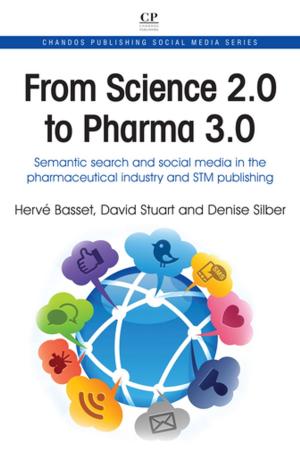| Author: | P.U. Giacomoni | ISBN: | 9780080518169 |
| Publisher: | Elsevier Science | Publication: | July 31, 2001 |
| Imprint: | Elsevier Science | Language: | English |
| Author: | P.U. Giacomoni |
| ISBN: | 9780080518169 |
| Publisher: | Elsevier Science |
| Publication: | July 31, 2001 |
| Imprint: | Elsevier Science |
| Language: | English |
"Sun Protection in Man" looks at the beneficial and harmful effects of solar radiation. The physiological consequences of sun exposure have been systematically studied starting at the end of the nineteenth century and we now have accumulated knowledge about how Caucasian and Asian skins reacts to solar radiation. The chemical effects of solar ultraviolet radiation have been analyzed with particular emphasis during the second half of the twentieth century. Research on micro-organisms has allowed us to understand the mechanisms of UV-induced mutagenesis and photosensitization. Studies with laboratory rodents have opened the path to the understanding of UV-induced immune-depression, carcinogenesis, photo-damage and photo-aging. The results of these studies have enabled other scientists to investigate the same phenomena in human organs such as the skin and the eye. UV radiation damages hair, as well. The present knowledge in these fields is summarized in some of the chapters of this monograph.
Mass phenomenon in Europe with the generalization of summer vacations which were a consequence of social reforms introducing the concept of "paid vacations". This created a need for protection and opened a market for sunscreens.
This monograph is concerned with sun protection as a whole and is not just "another book on sunscreens". Nonetheless, in these days of general concern, it is important to learn about the efficiency of sunscreens. Several authors discuss how to reduce the number of impinging photons and explain why sunscreens seem to offer less protection than expected. Guidelines are given on how to use sunscreens in everyday life, which are expressed rigorously though clearly, for access to the common reader.
Our knowledge on the relationship between sun and humans is at the early stages of development. Industrial and commercial activities are concerned by the development of this knowledge, and rules have been and will be promulgated to guarantee efficacy and safety of sun-products. It is hoped that this monograph will be of interest to the scholar, the layman and the legislator.
"Sun Protection in Man" looks at the beneficial and harmful effects of solar radiation. The physiological consequences of sun exposure have been systematically studied starting at the end of the nineteenth century and we now have accumulated knowledge about how Caucasian and Asian skins reacts to solar radiation. The chemical effects of solar ultraviolet radiation have been analyzed with particular emphasis during the second half of the twentieth century. Research on micro-organisms has allowed us to understand the mechanisms of UV-induced mutagenesis and photosensitization. Studies with laboratory rodents have opened the path to the understanding of UV-induced immune-depression, carcinogenesis, photo-damage and photo-aging. The results of these studies have enabled other scientists to investigate the same phenomena in human organs such as the skin and the eye. UV radiation damages hair, as well. The present knowledge in these fields is summarized in some of the chapters of this monograph.
Mass phenomenon in Europe with the generalization of summer vacations which were a consequence of social reforms introducing the concept of "paid vacations". This created a need for protection and opened a market for sunscreens.
This monograph is concerned with sun protection as a whole and is not just "another book on sunscreens". Nonetheless, in these days of general concern, it is important to learn about the efficiency of sunscreens. Several authors discuss how to reduce the number of impinging photons and explain why sunscreens seem to offer less protection than expected. Guidelines are given on how to use sunscreens in everyday life, which are expressed rigorously though clearly, for access to the common reader.
Our knowledge on the relationship between sun and humans is at the early stages of development. Industrial and commercial activities are concerned by the development of this knowledge, and rules have been and will be promulgated to guarantee efficacy and safety of sun-products. It is hoped that this monograph will be of interest to the scholar, the layman and the legislator.















